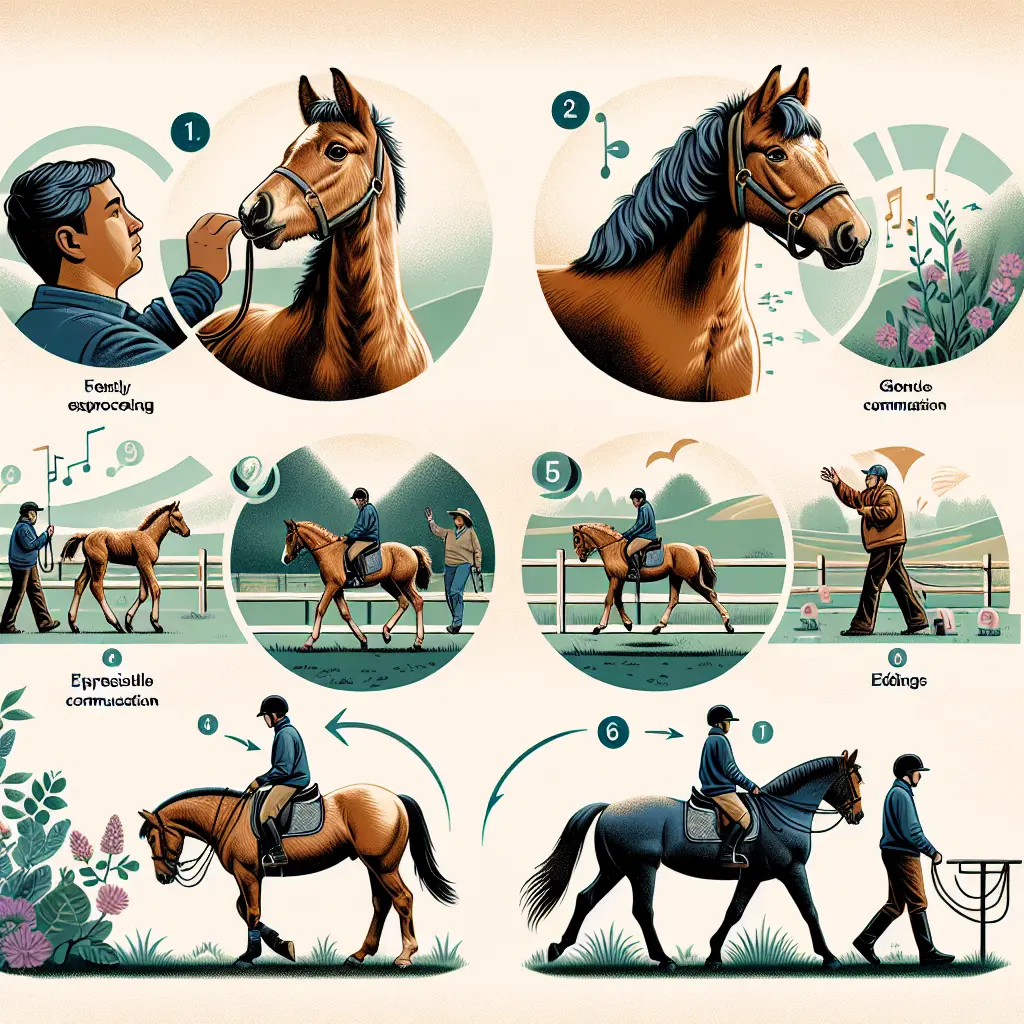The Art of the Glow-Up: How to Transform Your Youngstock into Stunning Horses
Transforming young horses into stunning, well-trained companions is an art that requires patience, dedication, and a structured approach. If you're in the horse training and care space, you're likely aware of the joys and challenges that come with nurturing a young foal into a majestic equine. Let's delve into the comprehensive steps you can take to ensure a successful transformation.
Phase 1: Early Handling and Imprinting
Early handling and imprinting are the foundations of a young horse's development. Just like with any young creature, the first experiences significantly influence their future disposition.
- Halter Training: Use a small, adjustable halter to ensure comfort. Let the foal familiarize itself with the halter gently without force.
- Pressure Training: Teach the foal to respond to gentle pressure, aiding in future handling and lead practices as suggested by American Quarter Horse Journal.
Phase 2: Groundwork and Basic Training
Groundwork is essential for instilling obedience and responsiveness. These exercises are the building blocks of a horse's educational journey.
- Leading: The aim is to have the horse walking calmly beside you, understanding verbal cues and respecting boundaries.
- Backing Up: Train the horse to back up gently, promoting compliance and enhancing maneuverability.
- Yielding Hindquarters: Developing control over the horse’s movements by training it to yield its hindquarters improves trust and leadership.
Phase 3: Desensitization and Sensitivity Training
The objective of desensitization is to cultivate a horse's confidence in novel contexts while minimizing its propensity to spook.
- Introduce your horse to new objects and environments gradually, rewarding calm behavior.
- Apply positive reinforcement to encourage curiosity, not fear.
Phase 4: Progression to Advanced Training
Once the basics have been mastered, it’s time to embark on advanced training, including complex movements and commands.
- Collection: This focuses on harnessing the horse’s power through intricate exercises like dressage.
- Lead Changes: Mastering lead changes demonstrates your horse’s athleticism and obedience.
Phase 5: Introduction to Riding and Saddle Preparation
Introducing a horse to riding requires a gradual and considerate approach. Start with saddle familiarization and progress to weight applications.
- Introduce the saddle with gentle pressure, allowing the horse to adapt without stress.
- Progress to having the rider lie across, eventually sitting upright, ensuring the horse remains calm and composed.
Phase 6: Long Lining and Balanced Riding
Long lining acquaints the horse to a rider’s aids and balance without the direct weight of a rider initially. This method promotes strong foundational balance and communication.
- Lunging Circle Techniques: Use a lunging circle to navigate various gaits and transitions using voice commands.
- Gradually involve the rider more actively, incrementally building the horse’s confidence.
Challenges and Considerations
Throughout a young horse’s development, growth spurts can pose significant challenges, often impacting balance and energy levels.
- Monitor your horse’s physical condition vigilantly, adjusting training regimes to avoid overworking or causing unnecessary stress.
- Focus on maintaining balance and trust, especially during rapid growth phases.
Effective Tools and Apparel for Training
Equipping yourself with the right tools and apparel can make all the difference in your training journey. Consider exploring collections for Jodhpur, Horse Riding Boots, and Gloves tailored to optimize your riding experience.
Nutritional Support for Optimal Development
The right nutritional support ensures your horse maintains optimal health throughout their formative years. Supplement their diet with necessary vitamins and minerals, exploring options within Everyday Horse Vitamins & Supplements.
Conclusion
Transforming young horses into stunning companions demands a thoughtful, patient approach. Through proper early imprinting, meticulous groundwork, desensitization, and advanced training, you lay a solid foundation for a successful equine partnership. Incorporate supportive nutrition and proper equestrian gear to enhance this journey further. Remember, the path is as much about forging a trusting relationship as it is about technical training milestones. For more insights, connect with professional trainers and equestrian communities that share a passion for the art of horse development.






